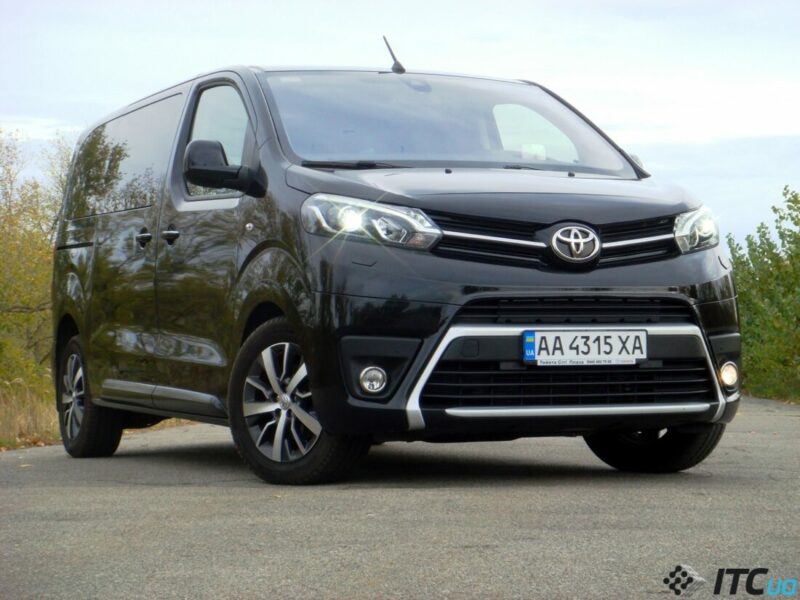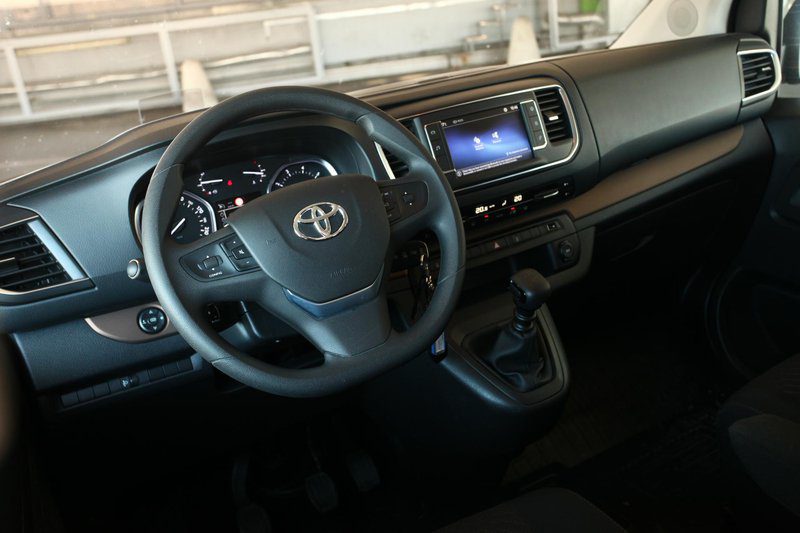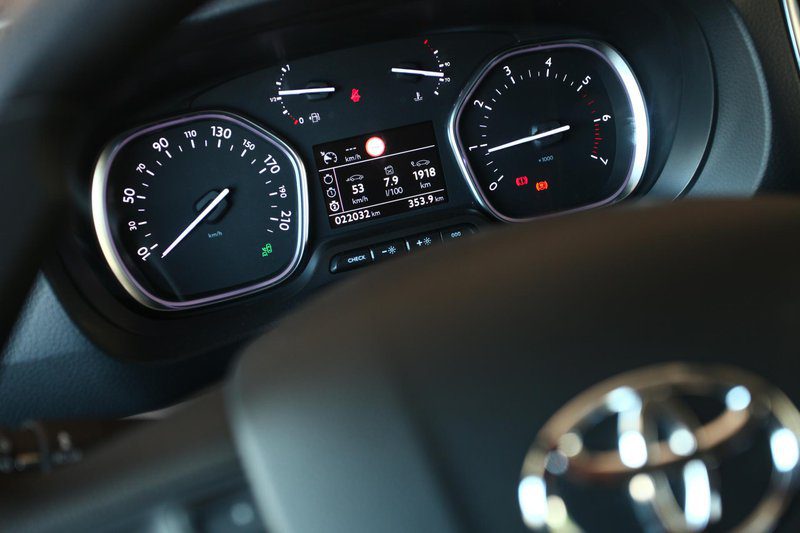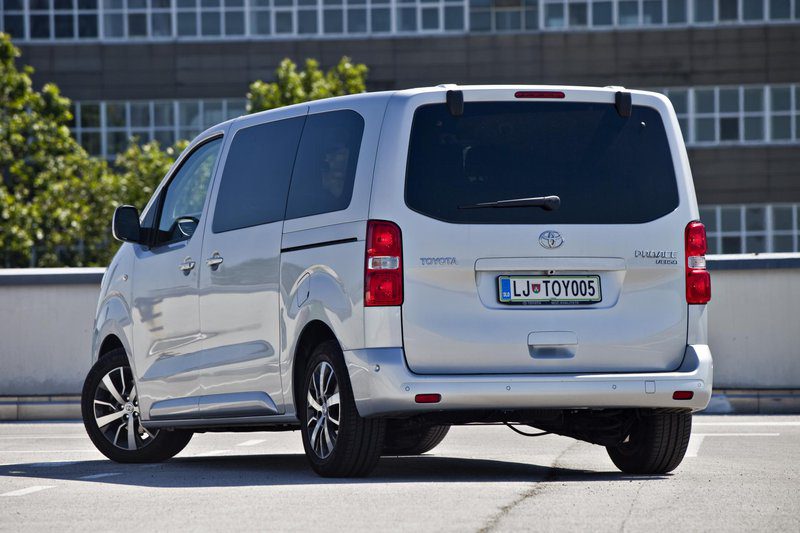
Test: Toyota Proace Verso 2.0 D-4D family 150 hp
They say that many people like to buy a car, make decisions and choose the right one. Well, if you want to have a lot of this fun, I recommend finding a suitable offer among three more or less identical cars - Toyota Proace Verso, Citroën Spacetourere and Peugeot Traveler. All three appeared on the Slovenian market at the end of last year and the beginning of this year. They all have a common origin and a common design - Toyota took on almost everything that the designers and marketers of the French PSA assumed. The van has been built for all three brands and significant differences between them are really hard to find. But in fact it is more than a simple van, it is a spacious family or personal vehicle with accessories.

There are almost no differences in technology, all three are available with three different body lengths (on two wheelbases), the range of engines is transparent. In fact, there are two turbo diesels available and with both the customer can choose from two specifications. Toyota Proace Verso was equipped with a two-liter turbodiesel base power in the middle body length. In fact, it is very similar to the two brothers we tested (Traveler in AM 3, 2017, Spacetourer in AM 9, 2017), and is expected to be the most popular among Slovenian customers.
So there is nothing to add about the drive, of course, the two-liter turbodiesel engine can be praised for its power, but I must admit that sometimes its "turbo" hole also causes less difficulty when starting; if we are not determined enough to step on the gas and carefully lower the clutch, the engine will quickly stall. It is also interesting to note that the engine can react differently to different consumers with average consumption. With a score of 7,1, Toyota was just one liter higher than the other two models tested ... So we're talking about heavy or light legs or other conditions of use.

I haven't yet explained the introductory announcement that buying a car can be a lot of fun: it's a search for differences between the Toyota Proac Verso and the other two, because there are quite a few of them, despite the common starting point. But we are only talking about how individual pieces of equipment (more or less necessary for a comfortable or even safe ride) were assembled into equipment packages and accessories. If you're used to other Toyota models that have a very high level of safety equipment as standard (the Toyota Safety Sense package), Proace will put that on the list of extras, even the richest one that Toyota describes as VIP. The Toyota buyer, as we tested (the second level of the Family trim), has to add 460 euros for such an additional package if he wants the most important achievement of safety devices, automatic braking in the event of a collision, this costs more than a thousand euros - because the package also includes adaptive cruise -control, projection screen in the driver's viewing angle under the windshield and color touch screen infotainment system is marked TSS Plus. In order to make the buying decision process long and complicated, the price list and accessories list will also provide you with other ways. When you really break through it, you may feel like it's all over. But this is not the case, because, as in the previous operation, comparing the same with the other two is also stressful and difficult - if the buyer does not have a predetermined choice regarding the brand.

Here are some well-known facts about choosing a big car like the Proace. With rich equipment, the virtual van seamlessly transforms into a comfortable minivan, which also offers Toyota the right car for large families or those who like to relax, who want to drive more passengers or larger luggage. Proace is a really great compromise in terms of terminology. The customer can choose one of three lengths. The short one, at just 4,61 meters long, seems to be the most convenient, but when using the medium one, which is just under five meters long, we found that the shorter ones can quickly cause problems due to lack of space. With a third bench at the rear of a mid-length car, we do add the dimension of more people-carrying capacity, but this arrangement leaves very little room for luggage. It sounds almost unbelievable, but soon the user finds himself running out of luggage space due to the passengers. Fortunately, an advanced version is available for them, but the decision must be considered before purchase. It is because of this play with the choice of space and constant or occasional needs that the decision on the size of such a spacious car with additional alternatives really deserves careful consideration!

The biggest difference between the three competitors lies in a completely "non-automotive" area - in the warranty and other services that Toyota offers to owners of its cars. The Proace is covered by Toyota's general five-year warranty, meaning that after three years (or 100.000 kilometers) of the general warranty, it's covered by a travel-restricted warranty for the next two years. Citroën and Peugeot have a total warranty of only two years.
text: Tomaž Porekar
photo: Sasha Kapetanovich
Read more:
Test Brief: Citroën Spacetourer Feel M BlueHdi 150 S&S BVM6
Test: Peugeot Traveler 2.0 BlueHDi 150 BVM6 Stop & Start Allure L2

Toyota Proace Verso 2.0 D-4D 150 hp family
Basic data
| Base model price: | 32.140 € |
|---|---|
| Test model cost: | 35.650 € |
Costs (per year)
Technical information
| engine: | 4-cylinder - 4-stroke - in-line - turbodiesel - displacement 1.997 cm3 - maximum power 110 kW (150 hp) at 4.000 rpm - maximum torque 370 Nm at 2.000 rpm. |
|---|---|
| Energy transfer: | front-wheel drive - 6-speed manual - tires 225/55 R 17 W (Michelin Primacy 3) |
| Capacity: | 170 km/h top speed - 0 s 100-11,0 km/h acceleration - Combined average fuel consumption (ECE) 5,3 l/100 km, CO2 emissions 139 g/km. |
| Mass: | empty vehicle 1.630 kg - permissible gross weight 2.740 kg. |
| External dimensions: | length 4.965 mm – width 1.920 mm – height 1.890 mm – wheelbase 3.275 mm – trunk 550–4.200 69 l – fuel tank XNUMX l. |
Our measurements
| T = 29 ° C / p = 1.028 mbar / rel. vl. = 55% / odometer status: 22.051 km | |
| Acceleration 0-100km: | 12,1s |
|---|---|
| 402m from the city: | 18,5 years ( 122 km / h) |
| Flexibility 50-90km / h: | 8,3 / 13,5s (IV/V) |
| Flexibility 80-120km / h: | 14,3s (V.) |
| test consumption: | 8,4 l / 100km |
| Fuel consumption according to the standard scheme: | 7,1 l / 100km |
| Braking distance at 100 km / h: | 36,6m |
| AM table: | 40m |
| Noise at 90 km / h in 5rd gear | 60dB |
evaluation
For those who need space, Proace is the right solution. But here too: more money - more cars.
We praise and reproach
engine
warranty period
raising the rear window in the tailgate
rear air conditioning control
lack of space for small items
rear door control
mechanical transmission precision
